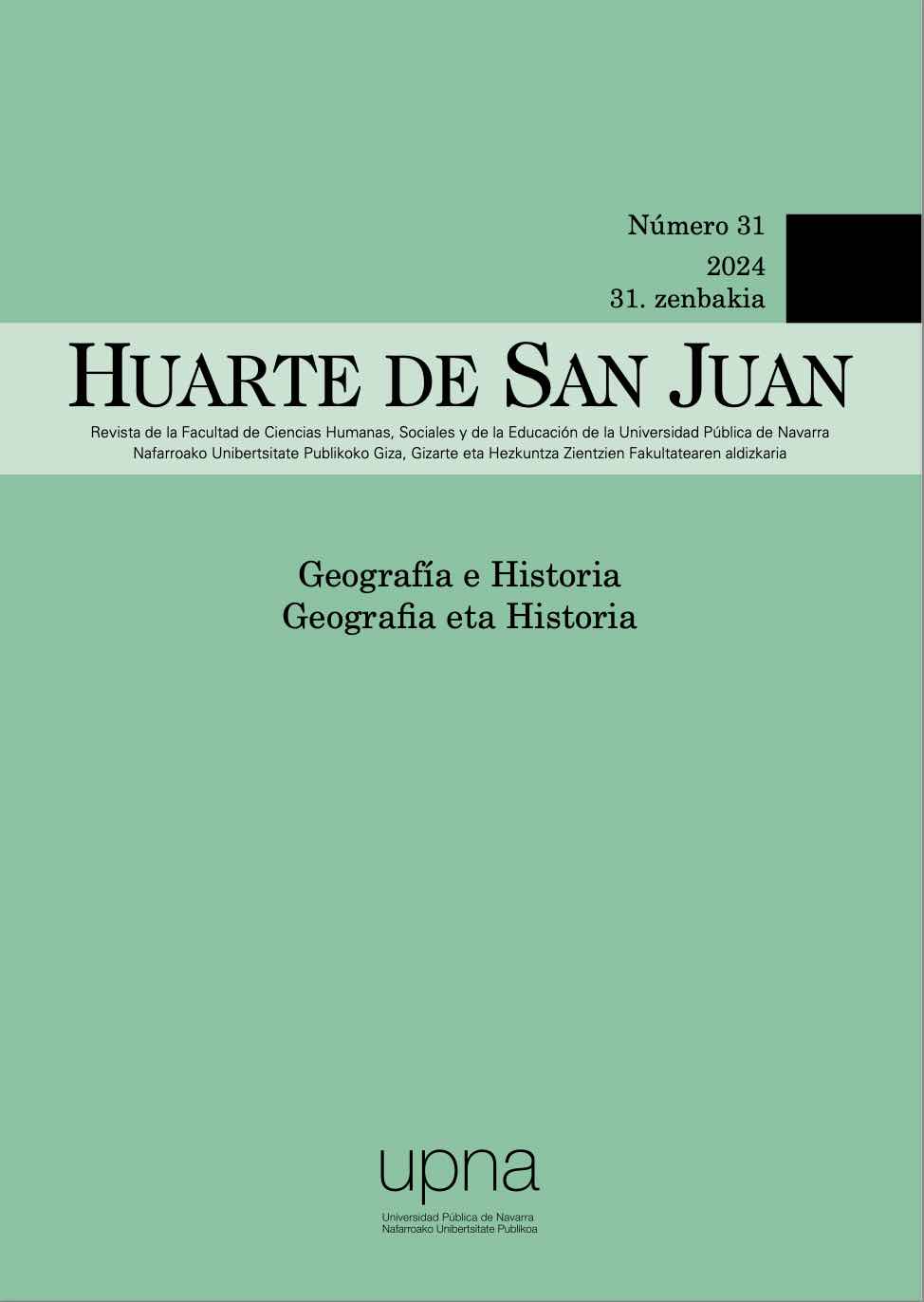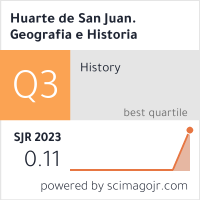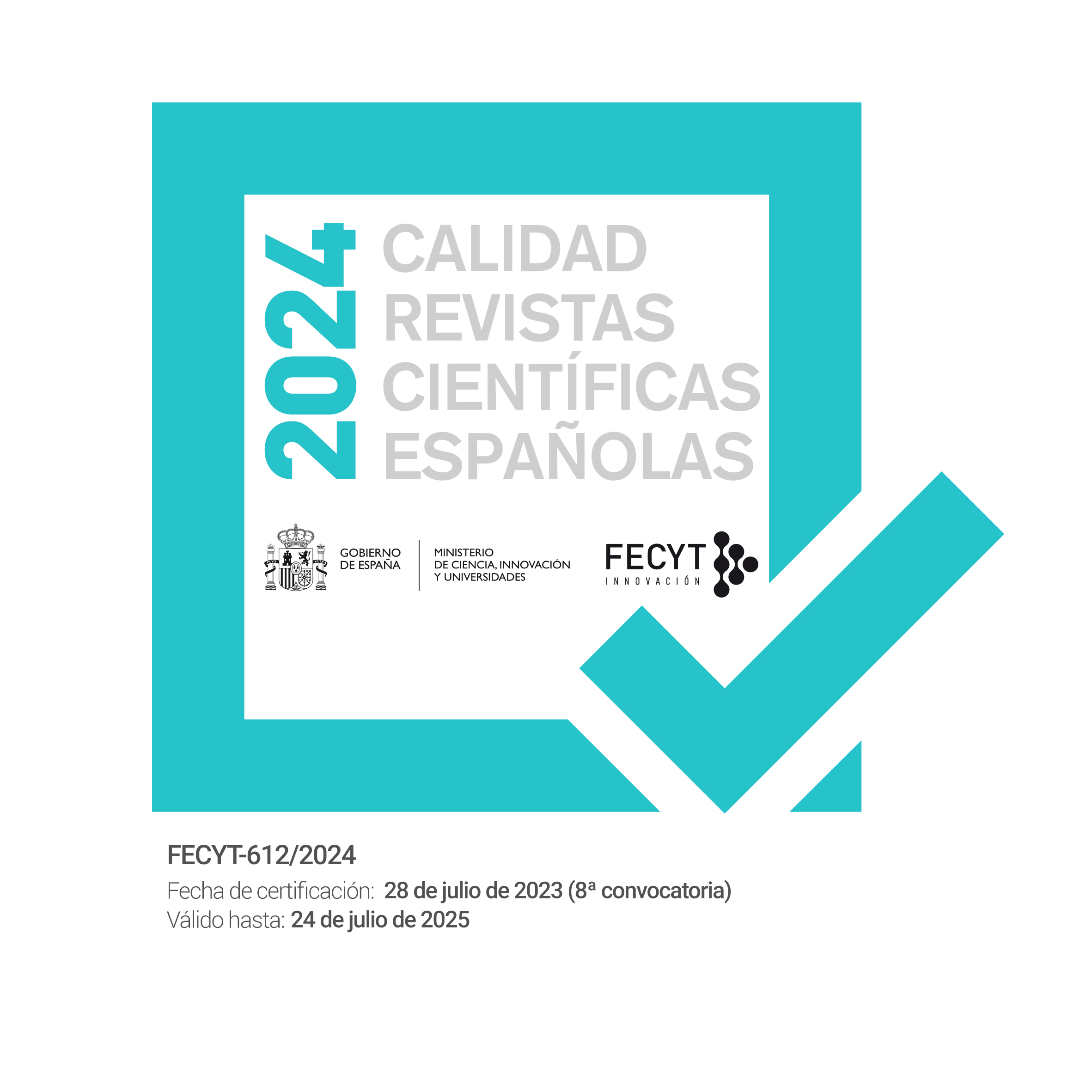The Fort of San Cristóbal (Ansoáin, Navarra): an approach from public archeology and the emotion and sentiment analysis
DOI:
https://doi.org/10.48035/rhsj-gh.31.14Keywords:
History, Archaeology, sentiments, emotions, shyuzetAbstract
Public Archeology understands that the research of any cultural asset only is completed if the understanding guidelines that underlie in the relationship with the recipients of these assets are taken into account. In this sense, this work aims to analyse the feelings and emotions that the Fuerte de San Cristóbal awakens in society, understanding that it is valuable information to take into account in the process of interpreting this historical site. A methodological proposal is presented from an R programming environment that allows extrapolating feelings and emotions that underlie texts – in this case Google reviews. However, the work proposal may be applied to different data samples related to other cultural assets. From the point of view of feelings, a moderate negative polarity and a predominance of emotions of fear and sadness are identified.
Downloads
References
Alaminos Fernández, Antonio, Introducción a la minería de texto y análisis de sentimiento con R, Alicante, Universidad de Alicante, 2023.
Albanese, Valentina E., y Teresa Graziano, «The role of cultural heritage in wellbeing perceptions: A web-based software analysis in two Italian provinces», Il Capitale Culturale. Studies on the Value of Cultural Heritage, 24, 2021, pp. 293-324. https://riviste.unimc.it/index.php/cap-cult/article/view/2724
Alforja Sagone, Iñaki y Félix Sierra Hoyos, Fuerte de San Cristóbal, 1938. La gran fuga de las cárceles franquistas, Pamplona, Pamiela, 2006.
Arce-García, Sergio, Jesús Díaz Campo y Belén Cambronero Díaz, «Online hate speech and emotions on Twitter: a case study of Greta Thunberg at the UN Climate Change Conference COP25 in 2019», Social Network Analysis and Mining, 13.1, 2023, pp. 1-13.
Berenzin, Mabel, «Secure states: towards a political sociology of emotion», The Sociological Review, 50.2, 2002, pp. 33-52. doi: https://doi.org/10.1111/j.1467-954X.2002.tb03590.x.
Bergerandi Etxeberria, Gotzon, y Amaia Kowasch Belasko, Juan Mari Pallín: Nafarroako San Kristobal Gotorlekuko (1937-1940) espetxeko bizitzari buruzko testigantza argitaragabea = un testimonio inédito sobre la vida de la prisión en el Fuerte de San Cristóbal, Navarra (1937-1940), Donostia, Aranzadi, 2016.
Besó Ros, Adrià, «Redes sociales y patrimonio. Una aproximación desde la historia de la difusión de los bienes culturales», Revista PH Instituto Andaluz Del Patrimonio Histórico, 102, 2021, pp. 187-188. doi: https://doi.org/10.33349/2021.102.4823.
Carbonelli, Juan Pablo, «La interpretación en arqueología, pasos hacia la hermenéutica del registro», Prometeica. Revista de Filosofía y Ciencias, 5, 2011, pp. 5-17.
Carratala, Ernesto, Memorias de un piojo republicano: cautivo en los penales franquistas de Burgos, Fuerte San Cristóbal, Isla de San Simón, Astorga y Cárcel Modelo de Barcelona, Pamplona, Pamiela, 2007.
Castro Navarro, Emilio J., Jarnishs Beltrán Mejía e Isaías Miranda Viramontes, «Emociones de estudiantes en clases online sincrónicas que tratan espacios vectoriales», Revista Paradigma, 41, 2020, pp. 227-251.
Crespo, Ismael, Garrido, Antonio y Rojo, José Miguel, «El uso de las emociones en la comunicación político-electoral», Revista Española de Ciencia Política, 58, 2022, pp. 175-201. doi: https://doi.org/10.21308/recep.58.06.
Cuervo Carabel, Tatiana, Sergio Arce García, y Natalia Orviz Martínez, «Corporate social responsibility and its communication on Twitter: analysis of the discourse and feelings generated in society», Management Letters / Cuadernos de Gestión, 23.1, 2023, pp. 63-73.
Deacon, Harriet, y Rieks Sweets, «Authenticity, value and community involvement in heritage management under the world heritage and the intangible heritage conventions», Heritage and Society, 6.2, 2013, pp. 29-143.
Ekman, Paul, «Expression and the Nature of Emotion», en Klaus R. Scherer y Paul Ekman (eds.), Approaches to Emotion, New York, Psychology Press, 1984, pp. 319-343.
Ekman, Paul, «An argument for basic emotions», Cognition and Emotion, 6.3, 1992, pp. 169-200.
Elosua Olliden, Paula, «Existe vida más allá del SPSS? Descubre R», Psicothema, 21, 2009, pp. 652-655.
Etxeberria Gabilondo, Francisco, y Koldo Pla Larramendi (dirs.), El Fuerte de San Cristóbal en la memoria: de prisión a sanatorio penitenciario. El cementerio de las botellas, Pamplona, Pamiela, 2014.
Ezkieta Yaben, Fermín, Los fugados del Fuerte de Ezkaba, Pamplona, Pamiela, 2017.
Fernández, Ana María, «Comunicar emociones en el discurso metapolítico de Twitter: el caso de #Maduro versus @NICOLASMADURO», Observatorio, 12.3, 2018, pp. 175-194. doi: http://doi.org/dx8p.
Freiner, Ingo, y Hurt Hornick, Text Mining Package, 2023, https://cran.r-project.org/web/packages/tm/tm.pdf [consultado el 28/11/2023].
Fridja, Nico, H., The emotions, Cambridge, Cambridge University Press, 1986.
García Galindo, Juan Antonio, «La democratización de la cultura y la socialización del conocimiento en un contexto de crisis», Revista Eviterna, 9, 2021, pp. 221-236.
García González, Lidia Ángeles, Enrique Iturralde Chaparro, y Josué Alejandro Ramos Yebra, «Polarización del movimiento feminista en México a partir de los métodos digitales, el análisis de sentimientos y los hashtags #UNAMFeminista y #UNAMSinTransfobia», Paakat: Revista de Tecnología y Sociedad, 13.25, 2023, pp. 1-25. doi: http://dx.doi.org/10.32870/Pk.a13n25.800.
Garzia, Fabio et al., «Emotional Reactions to the Perception of Risk in the Pompeii Archaeological Park», International Journal of Safety and Security Engineering, 10.1, 2020, pp. 11-16.
Garzia, Fabio et al., «Sentiment and Emotional Analysis of Risk Perception in the Herculaneum Archaeological Park during COVID-19 Pandemic», Sensors, 22, 2022, 8138. doi: https://doi.org/10.3390/s22218138.
Hernández Sampieri, Roberto, Carlos Fernández Collado, y Baptista Lucio Pilar, Metodología de la investigación, México, McGrawHil, 2010.
Hu, Minqing, y Bing Liu, «Mining and Summarizing Customer Reviews», en Association for Computing Machinery, Proceedings of the ACM SIGKDD International Conference on Knowledge Discovery and Data Mining, New York, ACM, 2004, pp. 168-177. doi: https://doi.org/10.1145/1014052.
Isasi, Jennifer, «Análisis de sentimientos en R con “syuzhet”», Programming Historian en español, 5, 2021. doi: https://doi.org/10.46430/phes0051.
Jimeno Jurío, José María, El fuerte de San Cristóbal/Ezkaba, lugar de la memoria (1936-1945), Pamplona, Pamiela, 2022.
Jockers, Matthew L., Syuzhet: Extract Sentiment and Plot Arcs from Text, 2015, https://github.com/mjockers/syuzhet [consultado el 29 de noviembre de 2023]
Jockers, Matthew L., Introduction to the Syuzhet Package, 2023, https://cran.r-project.org/web/packages/syuzhet/vignettes/syuzhet-vignette.html [consultado el 29 de noviembre de 2023]
Johnsen, Harald, y Bjørnar Olsen, «Hermeneutics and Archaeology: On the Philosophy of Contextual Archaeology», American Antiquity, 57.3, 1992, pp. 419-436. doi: https://doi.org/10.2307/280931.
Kowasch Belasko, Amaia, y Francisco Etxeberria Gabilondo, Tejiendo redes: mujeres solidarias con los presos del Fuerte de San Cristóbal (1934-1945) = Sareak Ehotzen: San Kristobal Fuerteko presoekin elkartasuna izan zuten emakumeak (1934-1945), Pamplona, Gobierno de Navarra, 2017.
Liu, Bing, Minqing Hu, y Junsheng Cheng, «Opinion Observer: Analyzing and Comparing Opinions on the Web», en Proceedings of the 14th International World Wide Web conference (WWW-2005), 2005, Chiba, Japan.
Liu, Bing, Sentiment Analysis and Opinion Mining, San Rafael, Morgan & Claypool Publishers, 2012. doi: https://doi.org/10.1007/978-3-031-02145-9.
López, José Luis et al., «Emociones e interacción ciudadana: análisis de la comunicación emocional de los residenciables en Twitter y Facebook», en Blanca Gómez y José Luís López (eds.), Agenda sociodigital de la campaña presidencial de 2018, Coahuila, Universidad Autónoma de Coahuila. 2018, pp. 108-130.
Marrodán Vitoria, Ángel, «El fuerte de Alfonso XII en el monte San Cristóbal de Pamplona. Historia de su construcción y vida militar», en José Vicente Valdenebro García (coord.), El patrimonio fortificado pirenaico (s. XVI-XIX), Pamplona, Ayuntamiento de Pamplona, 2014, pp. 42-66.
Márquez, David, «El sector cultural davant el canvi cultural en l’àmbit local a Europa», Debats. Revista de cultura, poder i societat, 137.1, 2023, pp. 85-98. doi: https://doi.org/10.28939/iam.debats-137-1.5.
Marín, Andrés Felipe, y Jessica Marcela Quintero, «Confianza en el proceso de paz en Colombia en Twitter», Revista Mexicana de sociología, 80.11, 2018, pp. 115-137.
Martín, Jesús, Raúl Fuentes, y Teixeira Coelho, «La democratización de la cultura», Renglones, 51, 2002, pp. 121-126.
Misuraca, Michelangelo et al., «Sentiment Analysis for Education with R: packages, methods and practical applications», arXiv:2005.12840v1, 2020. doi: https://doi.org/10.48550/arXiv.2005.12840.
Mohammad, Saif, y Peter Turney, «Emotions Evoked by Common Words and Phrases: Using Mechanical Turk to Create an Emotion Lexicon», en Diana Inkpen y Carlo Strapparava (eds.), Proceedings of the NAACL-HLT 2010 Workshop on Computational Approaches to Analysis and Generation of Emotion in Text, Los Angeles, Association for Computational Linguistics, 2010.
Mohammad, Saif, y Peter Turney, «Crowdsourcing a Word-Emotion Association Lexicon», Computational Intelligence, 29.3, 2013, pp. 436-465. doi: https://doi.org/10.1111/j.1467-8640.2012.00460.x.
Mohammad, Saif, «Sentiment Analysis: Detecting Valence, Emotions, and Other Affectual States from Text», en Herbert L. Meiselman (ed.), Emotion Measurement, Sawston, Woodhead Publishing, 2016, pp. 201-237. doi: https://doi.org/10.1016/B978-0-08-100508-8.00009-6.
Mohammad, Saif, «Sentiment analysis: Automatically detecting valence, emotions, and other affectual states from text», en Herbert L. Meiselman (ed.), Emotion Measurement, Swaston, Woodhead Publishing, 2021, pp. 323-379. doi: https://doi.org/10.1016/B978-0-12-821124-3.00011-9.
Naldi, Maurizio, «A review of sentiment computation methods with R packages», arXiv, 2019, 1901.08319. doi: https://doi.org/10.48550/arXiv.1901.08319.
Nielsen, Finn Årup, «A new ANEW: Evaluation of a word list for sentiment analysis in microblogs», arXiv, 2011, 1103.2903. doi: https://doi.org/10.48550/arXiv.1103.2903.
Pang, Bo y, Lillian Lee, «Opinion mining and sentiment analisis», Foundations and Trends in Information Retrieval, 2.1-2, 2008, pp. 1-135.
Paradis, Emmanuel, R for Beginners, Montpellier, Institut des Sciences de l’Evolution. Université Montpellier II, 2005.
Pastor Pérez, Ana, y Margarita Diaz-Andreu, «Conservación (crítica) social en Arqueología», Chungara. Revista de Antropología Chilena, 2021, pp. 165-179.
Pellini, José Roberto, «Mudando o coracao, a mente e as calcas. A Arqueología sensorial», Revista do Museu de Arqueología e Etnología, 20, 2010, pp. 3-16.
Plutchik, Robert, «A general psychoevolutionary theory of emotion», en Robert Plutchik y Henry Kellerman (eds.), Emotion: Theory, Research, and Experience Cambridge, Academic Press, 1980, pp. 3-33.
Plutchik, Robert, «The nature of emotions», American Scientist, 89.4, 2001, pp. 344-350.
Querol, María Ángeles, y Francisca Hornos, «La representación de las mujeres en el nuevo Museo Arqueológico Nacional: comenzando por la Prehistoria», Complutum, 26.2, 2015, pp. 231-238. doi: https://doi.org/10.5209/rev_CMPL.2015.v26.n2.50433.
Rodríguez, Karines, Yamile Haber, y Miguel Ernesto Gómez Masjuán, «Humanidades digitales: un acercamiento a metodologías emergentes desde el caso #ElectionsUSA», ALCANCE Revista Cubana de Información y Comunicación, 10. 25, 2021, pp. 301-323.
Rodríguez Salazar, Tania, «El valor de las emociones para el análisis cultural», Papers, 87, 2008, pp. 145-159.
Rosenbrock, Germán, Sebastián Trossero, y Andrés Pascal, «Técnicas de Análisis de Sentimientos Aplicadas a la Valoración de Opiniones en el Lenguaje Español», en Marcia I. Mac Gaul (ed.), Memorias del Congreso Argentino en Ciencias de la Computación (CACIC), Salta, Universidad Nacional de Salta, 2021, pp. 291-300.
SAA-Society for American Archaeology, «What is Public Archaeology?», https://www.saa.org/education-outreach/public-outreach/what-is-public-archaeology [consultado el 21/11/2023]
Said Hung, Elias, Sergio Arce García, y Daria Mottareale Calvanese, «Polarización sentimental en Twitter durante el Paro Nacional de 2021 en Colombia», Cuadernos.Info, 55, 2023, pp. 281-309. doi: http://dx.doi.org/10.7764/cdi.55.50483.
Sarica, Serhad, y Jianxi Luo, «Stopwords in technical language processing», PLOS ONE, 16.8, 2021, e0254937. doi: https://doi.org/10.1371/journal.pone.0254937.
Sauter, Disa et al., «Cross-cultural recognition of basic emotions through nonverbal emotional vocalizations», Proceedings of the National Academy of Sciences, 107.6, 2010, pp. 2408-2412. doi: https://doi.org/10.1073/pnas.0908239106.
Vélaz Ciaurriz, David, «La comunicación de la Prehistoria a través de las redes sociales: El caso de Twitter», Complutum, 34.2, 2023, pp. 561-581. doi: https://doi.org/10.5209/cmpl.92268.
Ventura, Aniela Suray, «Argumentación y discurso político en Twitter. Análisis de la campaña presidencial argentina 2011», Aposta. Revista de Ciencias Sociales, 69, 2016, pp. 39-66.
Wade, Graham, Signal coding and processing, Cambridge, Cambridge University Press, 1994.
Wankhade, Mayur, Annavarapu C. S. Rao, y Chaitanya Kulkarni, «A survey on sentiment analysis methods, applications, and challenges», Artficial Intelligence Review, 55, 2022, pp. 5731-5780. doi: https://doi.org/10.1007/s10462-022-10144-1.
Wickham, Hadley, Package «stringr»: Simple, Consistent Wrappers for Common String Operations, 2023, https://cran.r-project.org/web/packages/stringr/stringr.pdf [consultado el 28/11/2023].
Downloads
Published
How to Cite
Issue
Section
License
Copyright (c) 2024 David Vélaz Ciaurriz

This work is licensed under a Creative Commons Attribution-NonCommercial-NoDerivatives 4.0 International License.
La información referente al sistema de autoarchivo y política de derechos de explotación establecido por esta revista puede consultarse en DULCINEA.









